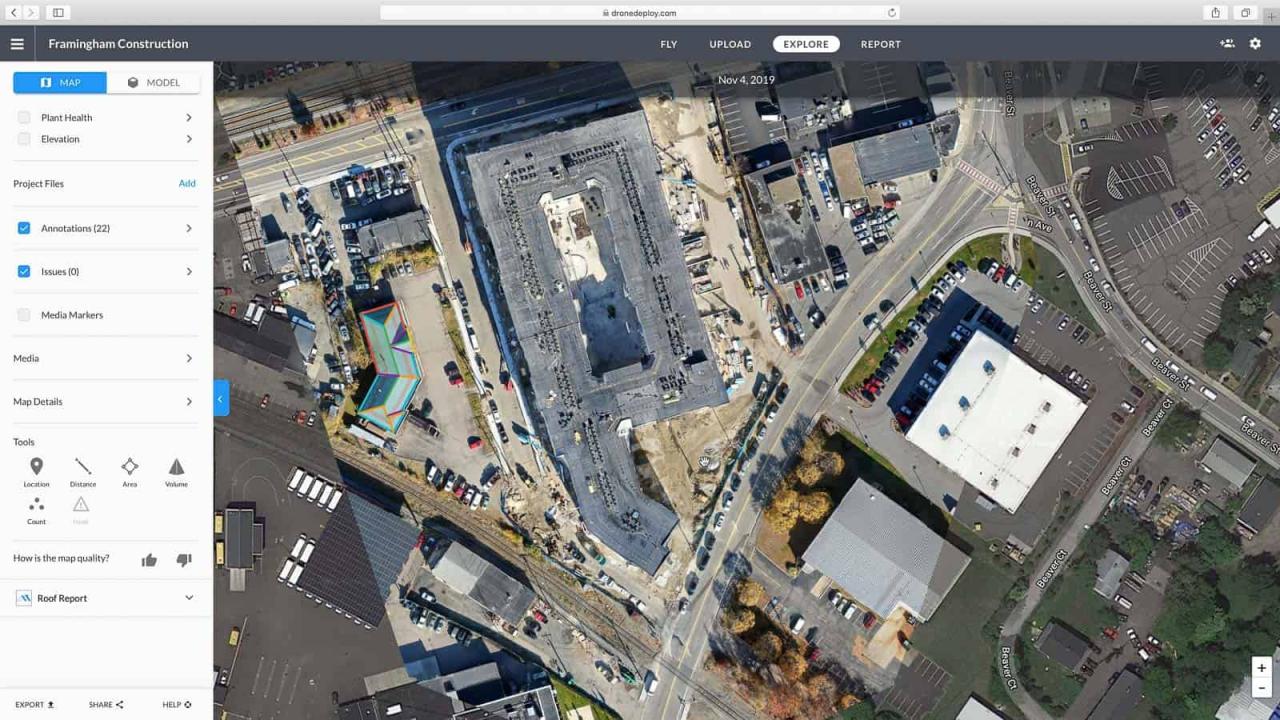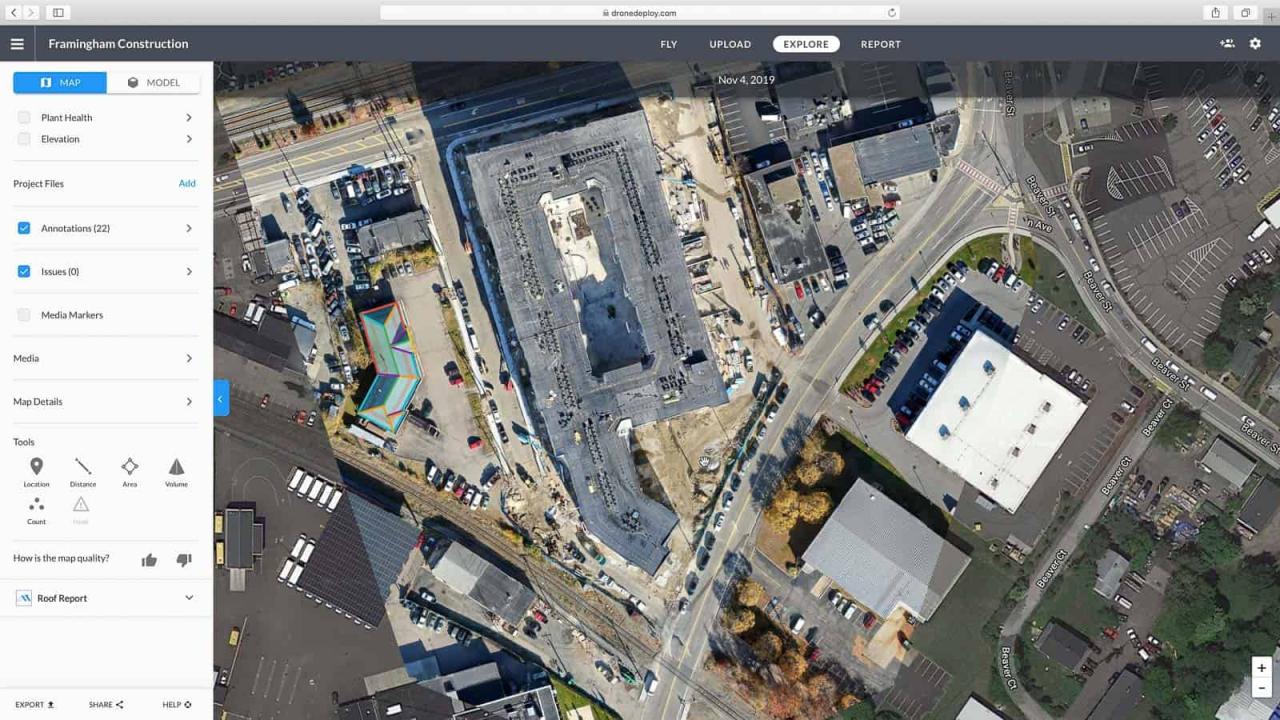How to use drone deploy – How to use DroneDeploy? It’s easier than you think! This guide walks you through everything from setting up your account to mastering advanced features. We’ll cover importing flight data, processing stunning aerial imagery, creating professional reports, and even troubleshooting common issues. Get ready to unlock the power of drone data analysis!
Getting started with DroneDeploy is easier than you think! First, you’ll want to create an account and familiarize yourself with the interface. Then, check out this awesome tutorial on how to use DroneDeploy to learn about flight planning and data processing. Finally, practice flying your drone and processing the images to get the hang of the workflow.
Mastering DroneDeploy opens up a world of possibilities!
DroneDeploy simplifies the entire drone workflow, from pre-flight planning to post-processing analysis and report generation. Whether you’re a seasoned professional or a curious beginner, this guide will equip you with the knowledge to confidently utilize this powerful platform for your projects.
DroneDeploy: A Comprehensive Guide
This guide provides a step-by-step walkthrough of using DroneDeploy, a powerful cloud-based platform for processing and analyzing drone imagery. We’ll cover everything from account setup to advanced features, empowering you to harness the full potential of your drone data.
DroneDeploy Account Setup and Login

Creating a DroneDeploy account is straightforward. You’ll need a valid email address and a strong password. The login process is secure, employing multi-factor authentication for enhanced protection.
- Visit the DroneDeploy website and click “Sign Up”.
- Enter your email address, create a password, and accept the terms of service.
- Verify your email address via the link sent to your inbox.
- Log in using your email and password. You may be prompted to enable two-factor authentication for added security.
DroneDeploy offers various account types, including free trials and paid subscriptions. Each tier provides different features and storage limits.
Getting started with DroneDeploy is easier than you think! First, you’ll want to set up your account and connect your drone. Then, you’ll learn how to plan your flight, focusing on the area you need to map. Check out this great resource on how to use DroneDeploy for a step-by-step guide. Once you’ve flown and captured your data, processing and analyzing your results is a breeze using DroneDeploy’s intuitive interface.
Mastering DroneDeploy opens up a world of possibilities for aerial data acquisition.
| Plan | Storage | Processing Features | Support |
|---|---|---|---|
| Basic | Limited | Basic processing options | Community forum |
| Pro | Increased | Advanced processing, more data types | Email support |
| Enterprise | Unlimited | Customizable processing, priority support | Dedicated account manager |
Importing and Managing Flight Data
Importing flight data is crucial for efficient workflow. DroneDeploy supports a wide range of drone models and file formats, ensuring seamless integration with your existing equipment.
Organizing your projects effectively is key to efficient data management. A consistent naming convention and well-structured folder system will help you locate and access your projects easily.
- Use descriptive project names (e.g., “Site A – Survey 1”).
- Create separate folders for different projects and dates.
Here’s a list of common file formats supported:
- TIFF
- JPEG
- PNG
- Sidecar files (e.g., .xmp)
Processing and Analyzing Aerial Imagery, How to use drone deploy
DroneDeploy offers various processing options to transform raw drone imagery into actionable insights. These options include orthomosaics, 3D models, digital surface models (DSMs), and point clouds. Each option has its advantages and disadvantages, depending on the specific application.
Understanding processing parameters like ground sampling distance (GSD) and overlap percentage is crucial for achieving high-quality results. Adjusting these parameters allows for optimization based on project requirements.
For example, higher GSD values result in lower resolution images, while higher overlap percentages improve processing accuracy but increase processing time.
Creating and Sharing Reports
DroneDeploy simplifies the creation of professional reports. You can add annotations, measurements, and other relevant information directly within the platform. Reports can be exported in various formats, facilitating easy sharing and collaboration.
A well-structured report should include key findings, relevant images, and supporting data. Consider using clear headings, concise text, and visually appealing graphics.
Example Report Structure:
Executive Summary: Brief overview of the project and key findings.
Methodology: Description of data acquisition and processing methods.
Results: Presentation of key findings, including maps, charts, and tables.
Conclusions: Summary of the key findings and recommendations.
Utilizing DroneDeploy’s Measurement Tools

DroneDeploy offers a suite of measurement tools for accurate area calculations, volume estimations, and distance measurements. These tools provide valuable insights from aerial imagery, enabling precise quantification of features of interest.
| Tool | Application | Accuracy Considerations |
|---|---|---|
| Area Measurement | Calculating surface areas | Accuracy depends on GSD and image quality. |
| Volume Measurement | Estimating volumes of materials | Requires accurate elevation data. |
| Distance Measurement | Measuring distances between points | Affected by terrain and image distortion. |
Integrating DroneDeploy with Other Software

DroneDeploy integrates seamlessly with other GIS software and platforms, enhancing workflow efficiency and data analysis capabilities. This interoperability allows for a more comprehensive approach to data management and analysis.
Integrating DroneDeploy data with other platforms allows for richer contextualization and analysis. For example, overlaying drone imagery onto existing GIS data can provide valuable insights for land management or construction projects.
- ArcGIS
- QGIS
- AutoCAD
Troubleshooting Common Issues
Addressing common issues is crucial for maintaining a smooth workflow. Understanding potential problems and their solutions will minimize downtime and ensure efficient project completion.
A common issue is failed data uploads. This could be due to network connectivity problems, large file sizes, or corrupted files. Always ensure a stable internet connection and check file integrity before uploading.
A flowchart for troubleshooting a failed data upload might look like this (textual representation):
Start -> Check internet connection -> Stable? Yes -> Check file size -> Within limits? Yes -> Check file integrity -> Intact? Yes -> Upload again -> Success? Yes -> End; No -> Investigate file corruption -> No -> Contact support; Yes -> Upload again -> Success?
Yes -> End; No -> Contact support.
Advanced DroneDeploy Features
DroneDeploy offers advanced features such as automated processing, flight planning, and data collaboration tools. These features streamline workflows and improve overall efficiency.
Automated processing reduces manual intervention, saving time and resources. Flight planning tools optimize flight paths for efficient data acquisition. Data collaboration tools facilitate seamless sharing and teamwork.
A complex task using advanced features might involve: 1. Planning a flight mission using the DroneDeploy flight planning tool, specifying areas of interest and desired GSD. 2. Uploading the captured imagery to DroneDeploy for automated processing. 3.
Sharing the processed data with collaborators for joint analysis and report generation. 4. Utilizing the measurement tools for precise area and volume calculations. 5. Exporting the final report in a desired format for dissemination.
Mastering DroneDeploy opens up a world of possibilities for efficient data collection and analysis. From streamlined workflows to insightful reports, you’ll be amazed at how easily you can transform raw drone imagery into actionable information. Remember to explore the advanced features as your skills grow – DroneDeploy’s capabilities are constantly expanding!
FAQ Explained: How To Use Drone Deploy
What drone models are compatible with DroneDeploy?
DroneDeploy supports a wide range of drones; check their website for a complete list. Generally, most popular consumer and professional drones are compatible.
How much storage space do I need for DroneDeploy?
The storage needed depends on the size and number of your projects. DroneDeploy offers various storage plans to accommodate different needs. Start with a smaller plan and upgrade as required.
Can I use DroneDeploy offline?
No, DroneDeploy primarily operates online. While you can download processed data, the core functionality requires an internet connection.
What are the pricing options for DroneDeploy?
DroneDeploy offers various subscription plans, ranging from basic to enterprise-level options. Their website details the features and pricing for each plan.
